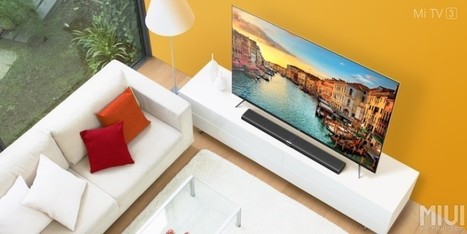Once upon a time, a few years ago, LG came to Mobile World Congress to show off one of the most ambitious smartphones I had ever seen. That device was the modular G5, and it was an utter flop. Since then, the company has dutifully worked on its solid flagship phones, but it seemed to have lost its affection for potentially great — if polarizing — ideas.
That's not true anymore, though. With its new G8 ThinQ, the company is starting to embrace its weirder tendencies once again. Whether or not people will actually appreciate some of these new features is still up in the air, but one thing is clear: we're not talking about business as usual at LG.
.../...
Things start to get more interesting once you start paying attention to the 6.1-inch, 19.5:9 FullVision OLED display. Let's start with the fact that it doubles as the phone's main earpiece — there's no traditional speaker here. That approach might not sound like the best idea, but it actually worked really well: Calls came through very loud and clear, to the point where I was concerned people around me could hear what my friend was talking to me about. I didn't expect I'd be ready to kiss the earpiece goodbye when I picked up the G8 for the first time, but here we are.
There's a notch cut into the top of the phone's screen, too, and I know; normally that wouldn't be much to write home about. When you consider that the company's rivals have come to embrace eye-catching hole-punch displays for 2019, though, LG's decision to stick with the more "traditional" notch feels a little behind the curve. As it happens, though, LG made full use of that cut-out. Next to the 8-megapixel front-facing camera is a time-of-flight sensor LG calls the Z Camera, and it's really what makes the G8 as kooky as it is.
Long story short, the Z Camera detects objects in front of it by firing a beam of infrared light and measuring how long it takes for that light to bounce back. It helps for fairly mundane things like isolating your head from the background when taking portrait selfies, but LG took things a step further -- now, you can unlock the G8 by holding your palm in front of that Z Camera, and even control it with mid-air hand gestures.
The former, technically known as Hand ID, is easily the more bizarre of the two. When you hold your hand above the Z Camera to register your palm, the phone actually identifies you based on the tell-tale pattern of veins in your hand. Pretty macabre, no? It's too bad, though, that Hand ID is actually a huge pain to use correctly. The problem is, it's nearly impossible to get your hand lined up just righton the first try — too often, it's a process of holding your palm above the phone, being told to move your hand closer, doing that, and going through the whole thing all over again. It's possible that people will actually get better with this in time, but frankly, trying to use Hand ID left me so frustrated that I'd rather just pick up the phone every time.
Those AirMotion gestures are, thankfully, a little easier to live with. Here's how they work: To get the phone's attention, you have to make a sort of claw with your hand in front of the camera. (I'm dead serious.) From there, you can activate app shortcuts you've previously set up, play and pause your media, and even dismiss incoming calls with a swipe. To be clear, the camera can be finicky about actually seeing the claw-hand trigger correctly, and certain gestures — like turning your hand to control the phone's volume — are more gimmicky than practical. Even so, these gesture controls actually work, and have come in surprisingly handy even during my limited hands-on time.



 Your new post is loading...
Your new post is loading...









The original feature ran on a Nokia phone, won a Mobile Monday Jury Award at MWC 2007 and was later deployed on flagship camera phones such as the Samsung Instinct or the Nokia N95